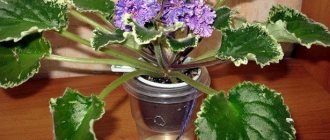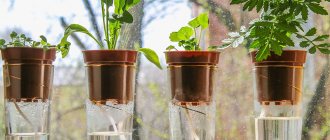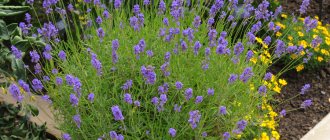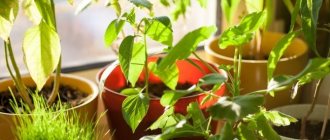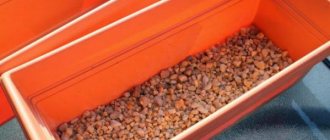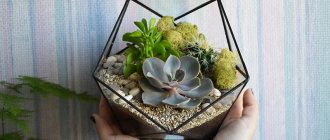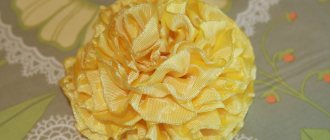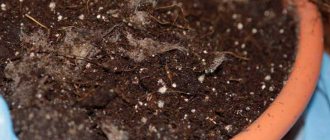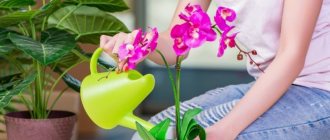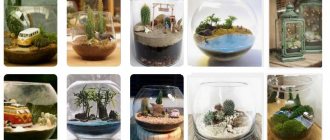Ways to water flowers while on vacation.
Many women are engaged in plant breeding and cannot imagine their life without indoor flowers. Indeed, indoor plants help make the air in the room more humid and also saturate it with oxygen. In addition, some house flowers improve mood and release huge amounts of phytoncides into the air, which treat asthma and respiratory diseases. In this article we will tell you what to do to keep your flowers alive when you go on holiday.
How to leave flowers at home while on vacation?
There are many ways that allow you to moisten the soil without attracting neighbors.
General rules:
- If you do not have the opportunity to ask your acquaintances or friends to water the flowers, you can solve the problem yourself. One of the simplest options is to water the plants generously before leaving, make the room dark, close the curtains, and remove the flowers from the windowsill to the floor. To keep it as dark as possible.
- After this, it is advisable to build a kind of mini-greenhouses that will retain moisture inside. Please note that before leaving, it is advisable to completely cut off the buds of flowering plants, as well as a few leaves. This will help the plants survive.
- Of course, this will significantly deteriorate their appearance, but after arrival you can quickly restore the plants using mineral fertilizers. Such procedures will help plants survive. After removing some leaves and also removing the buds, you need to pour a little water into the bottom of the container and immerse the flower pots in them.
- It is necessary to deepen approximately 1/3. Covering some plants with plastic bottles can also be helpful. In this case, it is advisable to make several holes in the lower part so that air can flow to the flower and soil, and it will not bloom. This mini-greenhouse retains moisture and will extend the life of your plant.
Watering with a flask
Homemade automatic watering
Before you choose your answer to the question: how to water flowers while on vacation, you should first familiarize yourself with the various methods of remotely caring for a plant. The automatic method of watering flowers is one of the most effective; moreover, it is quite easy to organize; it does not involve serious material costs.
Flowers tolerate this type of nutrition well for more than three weeks. The essence of the method is to ensure a constant supply of life-giving moisture in the required quantity to the roots of plants. To make such a system, we need an ordinary plastic bottle; its volume must be selected based on how much earth will need to be moved.
We divide the bottle into two equal parts, cut the top half with the cap to the size required for our volume of land (with a small margin). We make a small hole in the bottle cap and place a tourniquet or rope made of any cotton fabric into it (it is important that it absorbs moisture well). We screw the cork back into the upper part, and position the rope in such a way that something like a circle or spiral is formed.
This will help ensure maximum contact with water. After this, pour water into the lower part of the bottle and place the upper part into it. To prevent water from evaporating, it is worth gluing the seam between the parts with electrical tape or tape. The work is done, all that remains is to transplant the flower into this temporary pot and you will no longer have to worry about how to water the flowers during your vacation.
The second method of watering is to use ordinary droppers, as well as a water container. We need to purchase as many drippers as the number of plants that need watering. To begin with, we prepare the device: we remove the needles and check the integrity of the surfaces, then we fasten them together, and also weigh them down with some tips so that they are completely immersed in a reservoir of water. We collect a container of water (the volume depends on the duration of automatic watering), and place the ends of the droppers in it.
Then we place the entire structure on some elevated surface (for example, a stool). Let the moisture flow through the tubes by opening the regulators. We turn off the flow of water and place the other end of the dropper in the ground. Re-opening the regulator completes the job. This method is effective, but before watering flowers during vacation in this way, it is advisable to try it a little earlier than the planned trip: this way we will be sure of how much liquid the plant needs and what flow rate is most comfortable.
How to water flowers during a long absence: preserving moisture-loving plants
In addition, you can build another option for moistening the soil.
Instructions:
- To do this, you need to take a large container, fill it with expanded clay and moisten it. Immerse flower pots in water with expanded clay. Through the holes at the bottom, the roots of the plants will draw water towards themselves, thereby moistening the soil. You can build a drip irrigation system.
- One of the simplest options is to fill a basin with expanded clay and place flowerpots with flowers in it. Fill the rest of the space with newspapers, torn into pieces. Next, you need to turn on the tap so that the water flows drop by drop.
- The drops will moisten the newspaper, and the plant, in turn, will draw moisture from them.
Please note that the method of immersing flowerpots in water is only suitable for those plants that love moisture. Such as ferns and all types of moss. This method is not suitable for other plants, because their root system will rot if there is too much water in the pot.
Watering flowers on vacation
Ways to preserve moisture
How to preserve indoor flowers without watering for 2 weeks or a little less? In such cases, they need to be watered abundantly and try to limit the evaporation of moisture .
Flowers must be watered abundantly before going on vacation.
Gather all the plants in one place, place them fairly close to each other and water well (the soil should be completely moist). The pots can be placed in a container with water and expanded clay or wrapped in damp newspapers and polyethylene on top. This will create an area of high humidity for the flowers. You should not place containers with flowers in water: with constant contact with moisture, the roots quickly rot .
Before leaving, it is better to place all indoor plants in one place, close to each other.
Moisture evaporates from the surface of the leaves, so to preserve it longer, you can cover the plants with transparent plastic caps or just bottles. Condensation accumulating on the walls of such a “lid” will flow down and moisten the ground. In order for the plant to breathe, it is necessary to provide access to air from below.
Small specimens can be covered with bags on top - they can also provide a greenhouse effect.
Clay pots can be placed in slightly larger containers, and the gap between their walls can be filled with damp moss or expanded clay. Due to their absorbent properties, the materials will gradually release moisture, ensuring soil moisture.
Small plants can be covered with transparent bags on top
To preserve plants in plastic pots, moisture-absorbing materials can be placed on top of the soil.
It should be remembered that plants with this approach will still experience moisture deficiency and will also experience stress, for example, when creating a greenhouse effect. Therefore, especially valuable specimens should be provided with remote watering during the holidays.
Do-it-yourself waterer for flowers during vacation from a plastic bottle
You can greatly simplify your task and purchase a drip irrigation system. But it costs a lot of money. If you are not ready to fork out for the purchase, you can make something similar yourself.
Instructions:
- To do this, you need to take a plastic bottle, fill it with water, and screw on the lid.
- Use a thin awl to make a hole. Please note that water should not flow out of the hole, but drip from it little by little.
- Sink this lid 3 cm into the soil and leave. Plants will draw up as much water as their root system needs
Watering bottle from a plastic bottle
Wick watering
Making a simple design is not difficult. Take the fabric cord, place it in circles around the flower above the soil, then cover with soil. Place the pot with the plant on top of a container of water.
The wick will begin to absorb water and, rising up, it will wet the soil in the pot. There is no need to worry about the amount of moisture; the plants will receive as much as they need.
In stores you can find ready-made wick systems with the number of wicks from one to 7. The flower pot is placed on the floor, and the system is placed on a stool.
How to water flowers during a long absence: drainage watering method
You can also cope with moisture using so-called drainage irrigation.
Instructions:
- To do this, you need to take a fabric that absorbs water well. Place a bucket of water on a stool, wet the strips of this fabric, position the ends so that one of them is immersed in the bucket and the other touches the soil.
- You can even bury this strip a few centimeters into the ground. This way the plants will draw as much water as they need. Please note that such a structure cannot be placed in direct sunlight, because the strips of water may dry out. Then watering will not be carried out, and the plants will simply dry out.
- Instead of cloth, you can use regular bandages. Please note that for large pots of flowers it is better to use not one wick, but several. For about a 20 liter pot you will need 4 wicks so that the plants do not dry out during the hottest part of the day.
- You can place pieces of fabric in a plastic pipe, this will protect them from drying out. Another way to reduce moisture evaporation is to use moss or sawdust. You need to take the mulch, moisten it and place it on top of the soil in the pot. Moss can be used for the same purpose. These substances retain moisture inside the pot and prevent evaporation.
Drainage irrigation
Preparing flowers: basic recommendations
On average, indoor plants can live without the usual watering from 2 weeks to a month, while proper preparation ensures that the flowers are resistant to low humidity. Start “hardening” the flowers in advance:
- Approximately two weeks before your expected departure date, stop feeding. To effectively absorb minerals, plants need a large amount of water, so the earthen ball dries out faster;
- In a few days, carefully trim all the flowers and buds, remove several large leaves from the bush - this will not reduce the decorative effect, but will preserve moisture. The more green mass, the faster the water evaporates, and gentle pruning will help slow down this process;
- Remove pots from a lighted windowsill, placing them away from the window. With good lighting, frequent watering is required, and slightly darkened content reduces the rate of moisture evaporation;
- Before leaving, water the plants, generously moistening the earthen ball - the soil should be well saturated. Clay pots can be wrapped with damp sphagnum moss, securing it along the outer walls - this helps to better retain moisture. Additionally, you can cover the entire substrate around the trunk with moss;
- Cover small moisture-loving flowers with a transparent jar, glass or bag - this will create “tropical” conditions in which water will evaporate much more slowly. Provide little air access, but do not allow strong cracks to appear in the improvised greenhouse so that the earthen ball does not dry out during the holidays.
Wrapping the entire pot in a plastic bag or film so that only the above-ground part remains open will also help reduce the drying out of the earthen ball. Place the plants closer to each other, creating an imitation of the jungle, so that the evaporation of moisture occurs more slowly.
Moisture-loving flowers can be placed on expanded clay filled with water - to do this, they are first removed from the pallets and placed in a wide basin on the fraction. The simultaneous use of expanded clay and sphagnum moss is allowed.
How to preserve flowers during the holidays: alternative methods
Another excellent way and the most fashionable is the use of hydrogel. This is a fairly fashionable method; balls can be purchased at any flower shop. The hydrogel is soaked in water for several hours. After it swells, after about eight hours, it is placed on top of the pot. Thus, the hydrogel will gradually release water into the soil, moistening it. This method is suitable if you need to go on vacation for about a week. Please note that when drying, hydrogel beads can release substances that are harmful and toxic to the body.
You can also use some knowledge in electronics. This method is suitable if you know a little about electricity. You can make a waterer yourself. To do this you will need a large saucepan with a hole drilled in the bottom. A tube is welded onto it, to which a magnetic valve is connected. Several tubes extend from it, each to its own pot, and a time sensor is installed. After a certain time, the magnetic lock will operate and release water for several minutes. This type of watering is absolutely enough to moisturize the plants and not last for up to 3 months.
Watering flowers
For people who don't spare money and who are often absent, moving and on business trips, so-called smart pots are ideal. This is a kind of system that resembles a pot in a pot. This way there is water inside the smart pots. Above it is a container with expanded clay and soil. The flower simply draws water as the soil dries. Such pots are not cheap, so not everyone can afford them. Accordingly, many people who do not have the opportunity to purchase such a system choose more affordable options that can be made with their own hands.
Watering flowers
Which flowers tolerate drought more easily?
Various factors influence the survival of indoor pets without humidification.
Flowers in a home collection can vary greatly in origin, appearance and development characteristics. Most indoor plants can be safely left for a week without watering, after being well moistened. A longer period of lack of irrigation can negatively affect the health of indoor pets.
In winter, herbaceous plants are watered on average once a week, and during periods of active growth or flowering - once every 3-4 days. The irrigation regime for orchids is approximately the same. Agave, hoya, sansevieria, yucca and aspidistra are not so demanding on watering - they are content with moisturizing once every two weeks. Popular asparagus and chlorophytum tolerate drought well at low temperatures due to the presence of water reserves in the bulbs. Cacti and succulents are left without watering for a month if they are in a dormant period and the ambient temperature is from 5 to 10 degrees Celsius. For many representatives of this species, this content is the norm.
“Water-bearing plants” can hardly tolerate prolonged absence of watering. These include, for example, azalea, streptocarpus, primrose, calathea, cyclamen and episcia. It is better to hand them over to someone else for care during a long absence. If you travel from home often and for a long time, you should choose less moisture-loving plants for growing. Flowers with hard leaves and a thick trunk will easily tolerate a waterless period of up to 2 weeks.
- Air temperature and humidity.
In a warmer room with low humidity, indoor pets will begin to suffer from lack of moisture much earlier. If a long trip takes place in winter, it is appropriate to reduce the temperature of the central heating radiators. Additional containers of water in the room will help increase the humidity.
How to water indoor flowers during the holidays: do-it-yourself drip watering
Automatic watering of plants using a dripper is one of the unusual and interesting options. Suitable if you have several old containers from various IV solutions, such as saline. If you don't have them, you can use a regular plastic bottle.
Instructions:
- Take a tripod and hang several bottles on it. Now take a regular dropper system, one needle, stick it into a plastic bottle. Place the second part of the tube, removing the needle, directly into the pot.
- Before doing this, it is worth setting up the regulation of liquid ingress. The drip system is very convenient because you can speed up or slow down the flow of water into the pot. This is ideal if you are leaving for up to two weeks.
- Thus, there is no need to solder, tinker, or purchase anything from an electronics store. Because the drip system does everything on its own.
Plant dripper
Using hydrogel
If you are interested in information on how to ensure watering of indoor plants in the absence of owners for a long time without the use of any structures, then a hydrogel will help here. 1 g of such a polymer material can absorb about 250 ml of water, and then gradually release it into the soil.
The hydrogel can be placed in a pot when planting instead of a drainage layer, or buried at a depth of 2 cm from the surface. You can also soak it for 8 hours - it will absorb water and swell. After this, it is laid out in pots and covered with damp moss on top. This is necessary so that the hydrogel does not turn into dust, since it is believed that in this form it is toxic to the body.
There are several ways to provide indoor plants with moisture, so you shouldn’t burden your friends with your problems, or refuse to go on vacation or leave the flowers to die. You just need to choose a convenient system for watering your home flowers during your vacation and go on your long-awaited trip with a pure heart.
How to water flowers while going on vacation using capillary mats?
You can also cope with the lack of water using capillary mats.
Instructions:
- This system is sold in gardening stores and consists of a mat that is covered with a protective film on top. In this case, it is necessary to build a special system. Pour water into the bottom tray, place a tray with holes on top, on which the capillary mat is laid out.
- Flowerpots with plants are placed directly on it. The capillary mat is constantly saturated with water, taking it from the pan, which is located below.
- Plants, in turn, absorb as much water as they need. The mat is quite cheap, so many people can equip such a system. Similar irrigation systems are used in greenhouses for growing seedlings and flowers.
Watering with capillary mats
In fact, there are a huge number of means for watering flowers in your absence. Now in gardening stores you can find special conical flasks that work on the principle of a plastic bottle. They have a droplet form into which water is collected. A thin spout is inserted into the soil and water gradually flows from this tube into the soil. Plants independently draw as much water as they need.
How to prepare flowers to survive without owners
Every gardener, when going on vacation, solves the problem of how to water the plants so that they do not dry out. The first thing you need to take care of is to prepare your green pets for the fact that for some time they will not receive the usual amount of moisture.
- 2-3 days before leaving for a business trip or vacation, cut off all the flowers, as well as small leaves and a couple of large ones. Lush greenery requires rapid moisture consumption.
- Move the plants to where it is not hot and place them nearby, this will retain more moisture.
- When leaving, water the flowers more abundantly than usual and place them in a bowl of water. You can pour no more than 3-4 cm of water to the bottom. Pour expanded clay under the pots to a height of 8-10 centimeters, place the pots on it, removing the pallets.
- For plants in plastic pots, damp moss will do a good job of covering the soil in the pot.
